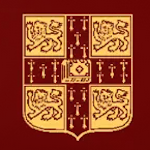Pelotas, a city of the state of Rio Grande do Sul, Brazil, on the left bank of the Sao Gongalo river near its entrance into the Lagoa dos Patos, about 30 m. N.W. of the city of Rio Grande. Pop. (1900), city, about 24.000; municipio (commune, 1037 sq. m.), 43,091. The Rio Grande-Bage railway communicates with the city of Rio Grande, and with the railways extending to Bage, Cacequy, Santa Maria, Passo Fundo and Porto Alegre. The Sao Gongal.o river is the outlet of Lagoa Mirim, and Pelotas is therefore connected with the inland water routes. The city is built on an open grassy plain (cameo) little above the level of the lake (28 ft. above sea-level). The public buildings include the church of Sao Francisco, dating from the early part of the 19th century, the municipal hall, a fine theatre, the Misericordia hospital, a public library containing about 25,000 volumes and a great central market. Pelotas is the centre of the xarque or carne secca (jerked beef) industry of Rio Grande do Sul. In its outskirts and the surrounding country are an immense number of xarqueadas (slaughter-houses), with large open yards where the dressed beef, lightly salted, is exposed to the sun and air. There are many factories or packing houses where the byproducts are prepared for market. Pelotas was only a small settlement at the beginning of the 19th century and had no parochial organization until 1812. It became a villa in 1830 and a city in 1835.
Pelotas


